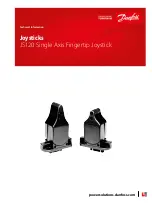
32
feature: Use this command to manually transmit HDCL-ID. This command works only when HID command is
ON. This command will become invalid when the station is not used as a repeater after ID is sent.
8-2 Concept of UI digipeat
This is to relay UI frames that match certain conditions. The APRS
system in North America uses a network
that is constructed with UI digipeats explained herein, in order to cover a large area with a single VHF frequency.
It specifies means to relay and reduce useless relays. A conventional packet to be digipeated is required to specify
a relay station, or a series of stations but the UI digipeat is repeated by unspecified relay stations.
8-2-1 To reduce useless relays
The UI packet to be digipeated does not specify relay routes. This may result in multiple retransmissions of the
same frame. This can be wasteful in terms of efficient frequency use. Certain methods have been developed to
make digipeating more effective.
UICHECK command: A frame, once received, cannot be relayed again for a certain period of time set with the
UICHECK command. This is filtered by the sender’s callsign and contents, then compared with CRC values.
The UICHECK command is valid to all UI digipeat features.
UIDWAIT command: In a conventional DIGIPEAT relay, DWAIT is considered “0”, thus it transmits as soon
as another transmission is terminated. This may result in conflicts with many other relayed frames. When a
conflict occurs, UI frames won’t be re-transmitted. Use PPERSIST and DWAIT commands to help avoid such
conflicts.
UIDIGI command condition: Sometimes called callsign substitution. Your station will not digipeat packets it
originated but will digipeat calls in the specified list and then replace them with your call. When there is
MYCALL in the relayed list, the content won’t be relayed by your station again.
UIFLOOD, UITRACE command feature: The relay steps can be restricted with using “callsigns of digipeater
list” in UIFLOOD,UITRACE commands. This is set by “NAME X-Y”, and X means the maximum number of
relays. Y stands for how many relays are left. Y is decremented each time the packet is relayed. When the
number is less than 1, no additional relays occur.
UISSID command feature: The relay steps can be restricted by using “the callsign of destination” in UISSID
command. This is set by “NAME X-Y”, and if X is 1 to 7, it means the maximum number of the relay step. Y
stands for how many relays are left.
8-3 UI digipeat feature related commands
8-3-1 UI check command
Abbrev. UIC default 28 range 0 – 250
example UIC 60
The UI frame, if heard again within the time parameter set in UICHECK, won’t be relayed. The unit is seconds.
The possibility of misinterpreting the identity of frames is very low, as the TNC calculates and memorizes the
16bit CRC of both the sender’s callsign and the contents of the text to identify identical frames.
8-3-2 UIDWAIT command
Abbrev. UIDW default OFF range ON/OFF
example UIDW ON
When on, activates the PPERSIST or DWAIT commands, in the event of a UI digipeat relay. Conventional
digipeaters transmit the relayed frames as soon as the frequency is cleared, regardless of PPERSIST/DWAIT
parameters. The EJ-50U offers this command to reduce collisions of frames. When ON is set, mentioned
commands become effective, while the OFF position transmits a relayed frame as soon as frequency is clear.












































